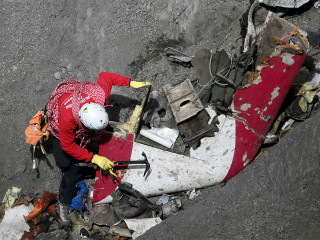Guest Author: Michael Hodgins, MD Lawyers
Background Facts
The plaintiff, Rhonda was diagnosed with intrauterine growth restriction (IUGR) before birth, and her condition continued to worsen in the weeks prior to her delivery. Rhonda was born via emergency C-section and was deprived of oxygen for at least the first half hour of her life. While Rhonda was not suffering notable impairments when she was discharged, two months later she was revealed to have suffered severe brain damage. Tragically, Rhonda has grown up with cerebral palsy and her care needs are significant: prior to trial, her damages were agreed upon at $14.9 million dollars.
The issues at trial were whether the defendants, Dr. Samra and Dr. Ma, were negligent for not having delivered Rhonda sooner in light of her IUGR, and if this negligence caused her current impairments.
With respect to causation, the defendants’ experts testified that Rhonda’s condition was not caused by the hypoxia she suffered at birth but rather a genetic or metabolic condition (though the Court of Appeal noted the precise condition was not specified). The plaintiffs of course had their own experts testify that Rhonda sustained her injuries due to the IUGR condition present before birth. Numerous experts of various disciplines gave evidence at trial.
The Jury’s Finding
The jury was asked to provide particulars for their findings on both negligence as well as causation. The jury found that both defendant doctors were negligent, and that their negligence caused Rhonda’s damages. In the case of Dr. Samra, they wrote; the negligence caused Rhonda’s injuries by “putting Rhonda at higher risk which more likely than not caused Rhonda’s brain damage”. In the case of Dr. Ma, they found that “due to [Rhonda] being IUGR, her medical history and NST results more likely than not caused her brain damage.”
The Lower Courts
The defendants moved under rule 52.08 to have the action dismissed on the basis that there was inadequate evidence to support the jury’s finding, and in the alternative that a new trial be ordered because the jury’s reasons were insufficient.
The Trial Judge refused the first ground of their motion on the basis that the jury was entitled to make inferences using a robust, liberal approach to the evidence. Even though she noted that this evidence was lacking in detail, it was there. However, her Honour granted the motion to set aside the jury’s verdict because they were “conclusory” and “failed to identify the mechanism of injury”.
When the plaintiffs appealed to the Divisional Court, the majority upheld the Trial Judge’s ruling. Despite correctly stating that jury verdicts should only be rejected in the clearest of circumstances where the reasons undermine the integrity of the jury’s verdict, the majority found that the reasons given in this case were so conclusory as to be non-responsive to the questions that were asked.
However, at the Divisional Court level there was also a powerful dissent by Corbett J. Recall that this was a case with multiple expert opinions. There was more than one precise way in which causation could have been found. Therefore, in Justice Corbett’s view, the jury’s reasons may well have been the only answer on which all 5 of them actually agreed. Pursuant to section 108.6 of the Courts of Justice Act, five of six jurors may agree on the answer to a question through different paths of reasoning. Justice Corbett further held that asking the jury for its conclusion on causation would impinge on the longstanding principle of secrecy in jury deliberations.
Because of these difficulties, which are inherent when a jury is asked to provide particulars for their finding of causation, Justice Corbett was of the view that these questions should not have been asked at all and should not be asked in future trials.
The Court of Appeal
The Court of Appeal began their analysis by highlighting the presumption that juries understand and properly apply the instructions provided by trial judges, and that the jury’s answer reflects a proper consideration of the evidence and an adherence to these instructions.[1] In this case, there was no issue with the quality of instructions that the Trial Judge provided found by either the Divisional Court or the Court of Appeal.
The Court then went on to reiterate the test on appellate review of jury verdicts that was set out in Stilwell v. World Kitchen Inc.[2]
- A a civil jury’s verdict should only be set aside where it is “so plainly unreasonable and unjust that no jury reviewing the evidence as a whole and acting judicially could have arrived at the verdict.”
- Appeal Courts do not find-comb jury answers, but rather accord them the respect of a commonsense interpretation even where there may be some ambiguity in the answers. Juries do not write reasons for judgment.
- A jury’s verdict is entitled to a fair and liberal interpretation in light of the evidence and of the circumstances, and its answers should be given the fullest possible effect and supported by any reasonable construction.
In light of this test, the Court of Appeal found that the trial judge erred in finding that the jury should have indicated a physiological mechanism of the injury since, as noted by Justice Corbett, it was not necessary that each juror agree on the reasons for the “bottom line finding”, so long as these reasons are supported by the evidence.
Looking at the evidence that was before the jury as a whole and examining the instructions they received, the Court of Appeal agreed that “The jury’s answers to the questions may well have reflected a bottom-line consensus achieved through various paths, which they expressed succinctly.”[3]
Other arguments, such as the argument that reference to Rhonda’s “increased risk” meant the jury had mistakenly applied the legally untenable standard of loss of chance in their causation analysis, were similarly rejected. This was because a fair and liberal interpretation of this reasoning was that what the jury really meant was that the risk that the defendant’s negligence created actually came to pass.[4]
The Court also considered the submissions of interveners on whether or not causation questions should have been asked at all, a position that was also taken by Justice Corbett. The Ontario Trial Lawyers Association intervened to argue that these questions should not be asked in future cases.
The Court of Appeal made several helpful comments in this regard. Firstly, they distinguished the Supreme Court Decision of Ter Neuzen v. Korn[5], which is often relied on for the proposition that juries should be asked to provide particulars. The Court clarified that in Ter Neuzen, the jury’s verdict was inscrutable as it did not reveal whether the jury used an unavailable legal route to find a breach of the standard of care.[6]
Further, while the Court of Appeal declined to adopt a “general rule” for when a trial judge should put particular questions to the jury since that is ultimately an exercise of the trial judge’s discretion, they stated that since jury deliberations are not transparent, there is an element of inscrutability to every jury verdict. In cases like Cheung where there are multiple reasoning paths that could lead to a finding of causation “asking for particulars may undermine the integrity of the jury’s verdict more by infelicities of expression than any real concern for the merits of the jury’s decision or reasoning and may stretch the limits of what a jury can reasonably be expected to give by way of reasons.”[7]
The Court of Appeal reinstated the jury’s verdict and Rhonda Cheung was re-awarded $14.9 million dollars.
Takeaways
- This case is an example of how asking the jury to provide particulars invariably benefits the defence, especially in medical negligence cases. If the jury had only provided a “bottom-line” answer, the defendants would have had no basis on which to appeal, and a severely injured young girl would have gotten money to pay for the care she needs that much sooner.
In light of cases like Cheung, plaintiffs’ counsel should resist the defence requesting that the jury be asked to provide particulars on causation. The Court of Appeal’s helpful comments at paragraph 71 provide good ammunition to do so. - This case also provides encouragement to counsel who are unsuccessful in resisting the defence’s request to have the jury provide particulars on causation.
The jury’s answers in this case objectively left a lot to interpretation (Justice Corbett’s rationale is a good explanation for why). However, the Court of Appeal reiterated that as long as there is a fair and liberal interpretation of the jury’s verdict that is consistent with the presumption that they considered the evidence and followed the judge’s instruction, the jury’s answers will withstand judicial scrutiny. - Finally, while the question of whether the jury had a sufficient evidence on which to make their finding was most thoroughly considered at the trial level, this case is also useful for plaintiffs resisting motions to dismiss the claim on that basis. Even in a decision where the lower courts were overturned for, effectively, not giving a fair and liberal enough interpretation of the jury’s answer, the argument that they did not have sufficient evidence on which to base their verdict was soundly rejected. This re-establishes the extremely high threshold that is required to dismiss an action on this basis.
[1] Paragraph 49.
[2] 2014 ONCA 770
[3] Paragraph 58
[4] Paragraph 65
[5] [1995] 3 S.C.R. 674.
[6] Paragraph 70
[7] Paragraph 71














